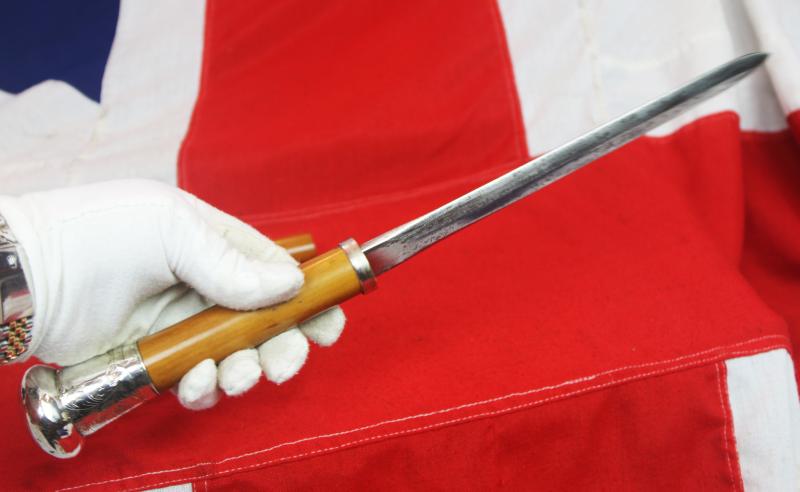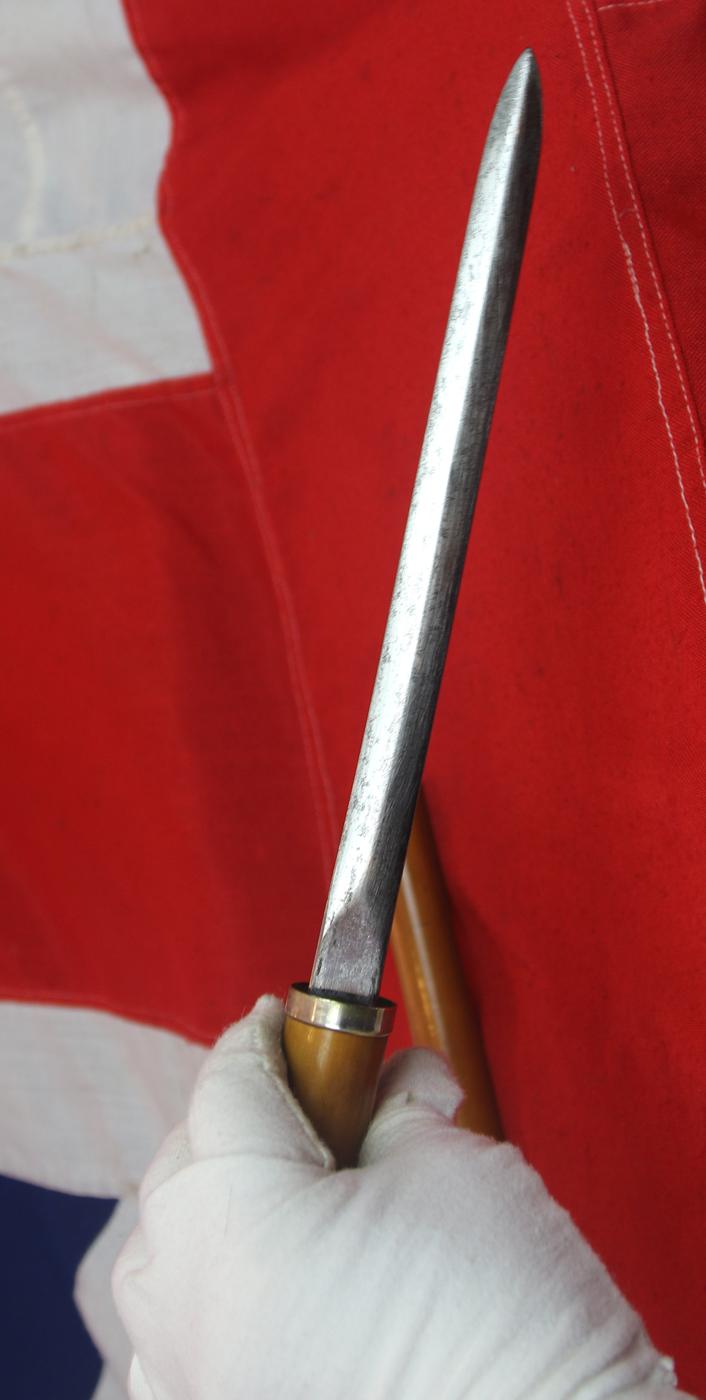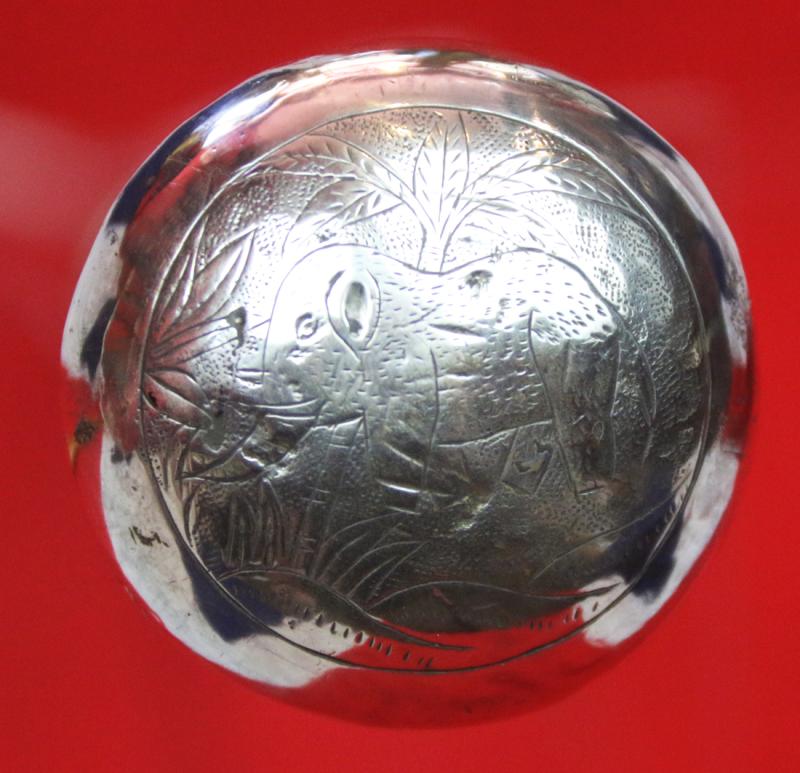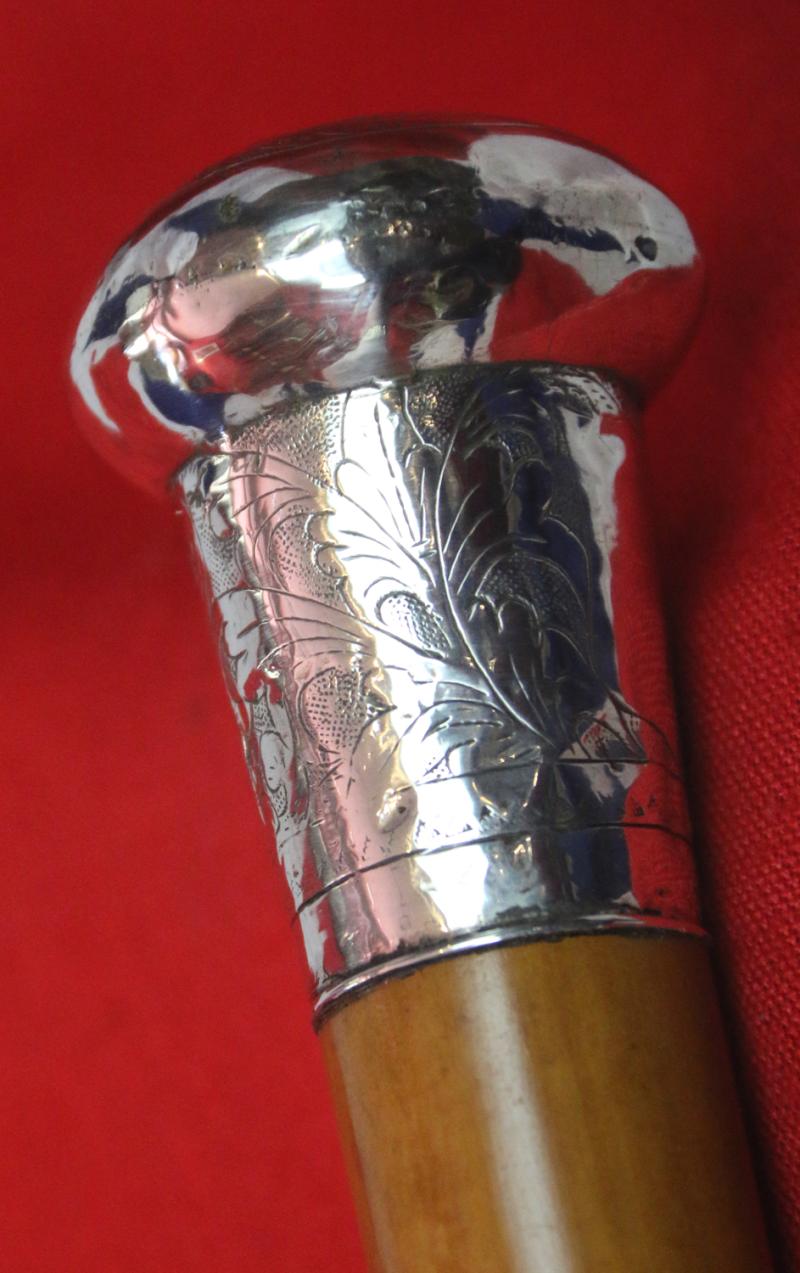A Superb Quality, Antique, Victorian, Silver Topped Hidden, Secret, Dagger-Cane. In Fine Malacca Wood. In Fabulous Condition
The top is silver, finely engraved with a Sumatran elephant in a palm tree jungle. With a snug friction release, the dagger is thus extracted by means of the drawing the hidden dagger from the Malacca haft. Malacca wood is taken from one species of rattan palm native to the coast of Sumatra. With long, slender stems it was considered perfect for making walking sticks and canes. It is very lightweight and strong with a satin-like bark that has a natural gloss. The colour varies from blond through reddish amber to brown. The blade is of two stage form of double edged form on great strength and substance.
This is a cane intended for close quarter action. The sword stick or cane was in its day ideal for defensive action, but the dagger-cane was usually intended for both offensive or defensive, ideal for use in a crowd or a hand to hand conflict in most confined quarters of any bustling city. As an antique collectable it is simply awesome. A startling and most collectable conversation piece, worthy of the legendary Sherlock Holmes himself, in fact, more likely a tool of the diabolical genius, and arch nemeses of Holmes, Professor Moriarty . One can only imagine what perils and heinous adversities that it's original owner, who had this awesome cane commissioned, must have feared, dreaded or even instigated. The name Bartitsu might well have been completely forgotten if not for a chance mention by Sir Arthur Conan Doyle in one of his Sherlock Holmes mystery stories. In the Adventure of the Empty House (1903), Holmes explained that he had escaped the clutches of his enemy Professor Moriarty through his knowledge of bartitsu, or Japanese wrestling. Using a walking cane with or without hidden blade.
The swordstick was a popular fashion accessory for the wealthy during the 18th and 19th centuries. While the weapon's origins are unknown, it is apparent that the cane-sword's popularity peaked when decorative swords were steadily being replaced by canes as a result of the rising popularity of firearms, and the lessening influence of swords and other small arms.
The first sword canes were made for nobility by leading sword cutlers. Sixteenth century sword canes were often bequeathed in wills. Sword canes became more popular as the streets became less safe. Society dictated it mandatory that gentlemen of the 18th and especially 19th centuries would wear a cane when out and about, and it was common for the well-dressed gentleman to own and sport canes in a variety of styles, including a good and sound sword cane. Although Byron was proficient in the use of pistols, his lameness and his need to defend himself in some potentially dangerous situations made a swordstick doubly useful to him. He received lessons in London from the fencing master Henry Angelo and owned a number of swordsticks, some of which were supplied by his boxing instructor Gentleman John Jackson.
Sword sticks came in all qualities, and for numerous purposes, from the simplest bamboo sword cane personal defender to stout customs officer’s ‘prod’, to offensive close quarter stiletto dagger canes and even to the other side of the world in the form of Japanese samurai’s shikome-sue, hidden swords.
We show two famous sword sticks in the gallery, one that belonged to Lord Byron, and another in a Presidential Centre Library collection, a historic sword stick is part of the Rutherford B. Hayes Presidential Centre Library collection in Fremont, Ohio from the Waggoner family, the sword-cane was said to have been presented to Mr Waggoner by General George Washington in honour of Waggoner's service in Washington's Life Guard during the American Revolutionary War
37 inches long overall 9.75 inches long blade. An original antique collectable for display purposes only.
Code: 25255
1195.00 GBP










